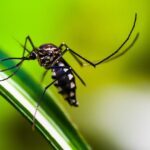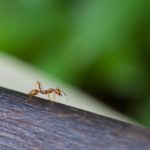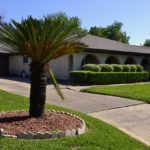FAQs

BEST WEED CONTROL TECHNIQUES
- Mow weekly during the spring and every 2 weeks during the hot, summer months
- Mow high (4 to 6 inches)
- Water regularly based on your lawn's conditions
BEST DISEASE/FUNGUS CONTROL TECHNIQUES
- Same as above, PLUS
- Water early in the morning (i.e., 5 a.m.), at least 1 inch per week
Services are scheduled based on a number of variables, including weather patterns, specific products used, geographic location, cleanups, and mowing schedules.
In most cases, we recommend watering every 2 to 3 days at intervals of 25 to 45 minutes, depending upon shaded areas, areas in full sun, and temperature. We also recommend watering in the early morning to allow the soil and turf to dry out during the day.
Overwatering and stagnant moisture will increase the likelihood of season fungus/disease, root rot, and surface algae.
In properly draining soils, watering less often but for a longer duration will improve root depth because the deeper the water penetrates the soil, the deeper the roots will grow.
Proper mowing is essential. The mistakes we most often see, and that should be avoided, include mowing too short and mowing before excessive heat.
Please do not hesitate to skip a mowing before or during a heat wave, as the lawn will be damaged and fast-growing crabgrass, nutsedge, and summer annual weeds will out-compete your grass.
In the spring, mowing 3 to 3.5 inches is optimal. At this length, the lawn can recover quickly and roots will be allowed the strengthen. Also, any present invasive weeds will not be allowed to seed and spread.
In the summer, mowing at 4 to 6 inches is strongly recommended. At this length, the soil is shaded and can retain moisture, which allows roots to continue to grow downward. This also reduces the energy the plant will need to regrow the blades (top growth). At this height, perennial and annual weeds will be crowded out by the thicker turf.
During each visit, in addition to each of the specific requirements of your lawn application, our skilled and knowledgeable technicians will:
- Arrive at your property and conduct themselves in a professional manner and answer any questions you may have about your program.
- Clean up all treated areas of your property, including blowing and removing product from your walkways, porches, driveways, and pool areas.
- Provide you with a detailed and comprehensive summary of the services performed that day.
- Make relevant recommendations for other treatment and/or care, including but not limited to mowing heights and watering times and frequency.
Yes, we offer two discounts.
- Prepayment Discount: You can save 10% on all services for which you pay in advance.
- Referral Discount: A $25 account credit for each customer referral who receives services for a full season.
To reduce the likelihood of red thread, brown patch, and any other seasonal fungus, please follow the proper watering and mowing information provided above. We recommend our 8-Step Lawn Fertilization Program to promote consistent fertility and our ability to monitor the property.
Wiping your mower blades after each mowing will not only keep them sharp it will also help reduce the spread of disease. Once disease has set in, bagging and removing grass clippings from the lawn also helps reduce the spread.
The short answer: No. Due to the many variables (heat, moisture, conditions of neighboring lawns, etc.), we cannot guarantee zero weeds, fungus, ad/or drought stress. We have always used a reduced chemical philosophy that promotes the safety and health of your lawn and the environment.
The long answer: Results will vary. Your lawn will be as beautiful and healthy as possible if all required elements are present. Everyone has a different idea about what a beautiful lawn is; however, the major elements that create all beautiful, healthy lawns include:
- The weather (i.e., temperature, amount of rain)
- Amount of sunshine (i.e., whether the lawn is in full sun, full shade, or part-sun and part-shade)
- The quality of the soil (i.e., elements in the soil, as well as whether it contains clay, sand, ledge and/or other rocks)
- Whether the wind, birds, and traveling water transports the seeds of weeds and other plants.
- The conditions on your property, and those of nearby property, such as:
- The presence of trees, weeds, other plants and shrubs
- The level of the water table
- The proximity of the lawn and/or parts of the lawn to ledge, asphalt, and cement
- How the lawn is maintained; specifically:
- When and how often the lawn is watered
- When and how often the lawn is mowed
- Whether lawn clippings are bagged or left to mulch
- Whether weeds are permitted to grow in mulch beds, gardens, etc.
- When and how the lawn is fertilized
Our role in the process of creating a beautiful, healthy lawn is only one of the above elements: to apply fertilizer and the products you request (Item 7). Your role in the process entails all decisions, specifically those listed in Item 6. Mother Nature bears the largest role, as you can see in Items 1 through 5.
When Mother Nature cooperates with us and you follow our recommendations, your lawn should be as beautiful and healthy as it’s possible to be.
Have more questions? Email or give us a call.






